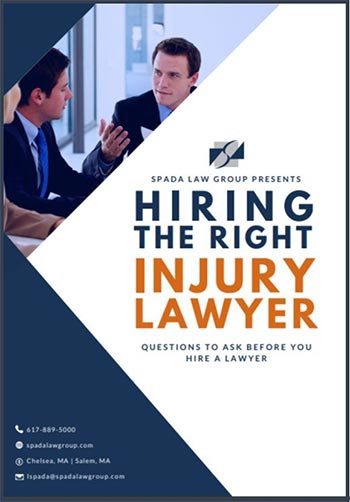I spend my work life battling with insurance companies for our clients. Whether it’s a car accident, a slip and fall or a worker’s compensation case, there is always an insurance company I am up against. The irony of course is that I, like everyone else, need insurance for my car, my house, my business etc. So, despite my adversarial relationship with the insurance industry as a whole, I have no choice but to do business with them. My company happens to be Liberty Mutual. I am not going to praise or disparage Liberty Mutual in this blog because depending on whether I am fighting against them for a client or they are assisting me with my own insurance needs, my feelings about them may differ. But one thing they do that is very interesting is publish an annual safety index which compiles and analyzes data on the causes of work-related accidents and injuries and their associated cost to employers in lost wages and medical expenses.
As you will see, The Top 10 List is interesting and a bit surprising. Without further ado, the top 10 causes of disabling injuries at work are:
1. Overexertion![Boston Area Personal Injury Attorney Workplace Injury]()
This category includes injuries caused by lifting, pushing, pulling, holding, carrying, or throwing objects. As I read this all I could think of was the UPS and Amazon delivery drivers who came to our office during the holiday season. The packages these people must routinely lift, push, pull, hold, carry and throw is mind-boggling. My back hurts just thinking about it. Back injuries and shoulder injuries are some of the more debilitating injuries we see in this category at our offices. A herniated disc in your back or torn rotator cuff in your shoulder can, depending on your job, result in prolonged and sometimes permanent disability from your employment. This is the leading cause of injury in the retail, healthcare, manufacturing, wholesale and transportation industries.
Cost to employer: $13.1B
2. Falls on the Same Level
Injuries in this category result from falling on the same level as opposed to down stairs or off platforms. These types of falls commonly occur on ice, wet floors, or on rugs or mats. They can also include tripping over an object and falling to the ground. Some of the more serious injuries that we handle here at Spada Law Group fall into this category. This is the leading cause of injury in the professional and business services and leisure and hospitality industries.
Cost to employer: $10.4B
3. Struck by an Object or Equipment
This category includes injuries caused by an object falling from above and striking a worker. Workers in warehouses, retail stores, construction sites, as well as plumbers, electricians, and carpenters all have the potential to be injured from objects. We have represented individuals seriously injured when merchandise has fallen from shelves in Walmart, Home Depot and Restaurant Depot to name a few.
Cost to employer: $5.2B
4. Falls to Lower Levels
Common causes of injuries in this category are falls from ladders, platforms, staging, roofs, stairs etc. We are currently litigating a case where a worker was inadvertently knocked down an entire flight of interior stairs by a fellow employee sustaining serious and career ending injuries. This is the leading cause of injury in the construction industry.
Cost to employer: $4.9B
5. Other Exertions or Bodily Reactions
It is interesting to me to see how Liberty Mutual classified the types of injuries and the causes. In this category we are looking at injuries caused by crawling, bending, reaching, twisting, climbing, kneeling, or walking. We have certainly seen our share of injuries caused by people bending, reaching or twisting but to date I can’t think of one we handled caused by crawling kneeling or simply walking without tripping. But obviously they happen and with enough frequency to give these types of injuries the 5th spot on the list.
Cost to employer: $3.7B
6. Roadway Incidents Involving a Motorized Land Vehicle
This is a fancy way of saying car and truck accidents. I was very surprised to learn that car accident injuries were ranked sixth on this list as they appear to be so numerous. The good news however is that vehicles are becoming safer with advanced technologies. Technologies such as lane departure warnings, collision detection sensors and air bag advances have all contributed to a reduction in crash related injuries.
Cost to employer: $2.7B
7. Slip or Trips Without Falling
This category includes injuries resulting from tripping over an object or resisting the fall. I like to call this category “tripping without hitting the deck!” Trip over a rug but somehow managed to NOT hit the ground, but still hurt yourself? Welcome to category 7!
Cost to employer: $2.2B
8. Caught in or Compressed by Equipment or Objects
How horrible does this category sound? Thankfully it does not occur with the frequency of some of the other types of injuries, but getting caught in or compressed by equipment, such as gears or rollers and machinery does happen and when it does the injuries sustained are often catastrophic. Workers lose hands, limbs and unfortunately in some cases their lives when caught in machinery.
Cost to employer: $1.9B
9. Repetitive Motions Involving Micro-tasks
Workers working on manufacturing assembly lines or people doing repetitive tasks over a long period of time often sustain repetitive stress injuries, Injuries such as carpal tunnel syndrome, tennis elbow, bursitis and tendonitis are all examples of repetitive stress injuries. These can be very debilitating injuries and often require refraining from the repetitive task for a significant period. This is the leading cause of injury in the construction industry.
Cost to employer: $1.6B
10. Struck Against an Object or Equipment
The description Liberty Mutual uses to describe this category includes injuries caused by walking into an open drawer or doors. Again, I have been practicing law for almost 30 years and have yet to see such an injury but hey they happen frequently enough to make the top 10 list.
Cost to employer: $1.2B
If you have a deeper interest in what kinds of injuries are included in each of the 10 categories above, the Bureau of Labor Statistics has a an Injury and Illness Classification Manual that provides much more detail on the topic.
So, what should you do if you find yourself unable to work due to a work-related injury? First, be sure to notify your employer that you got hurt on the job if it is not obvious from the situation. Next, get medical attention as quickly as possible. In addition to getting the obvious care you need, you will be able to better document the causal connection between your injury and a work-related activity. Lastly, get a free consultation with an experienced worker’s compensation lawyer as soon as possible to protect your rights.
At Spada Law Group, we offer free consumer guides and videos that answer many of the questions injured workers have. Take a look, download our free information or contact us for a free consultation. Learn what Spada Law Group is all about and how we might be the right personal injury lawyers for you and your case.




